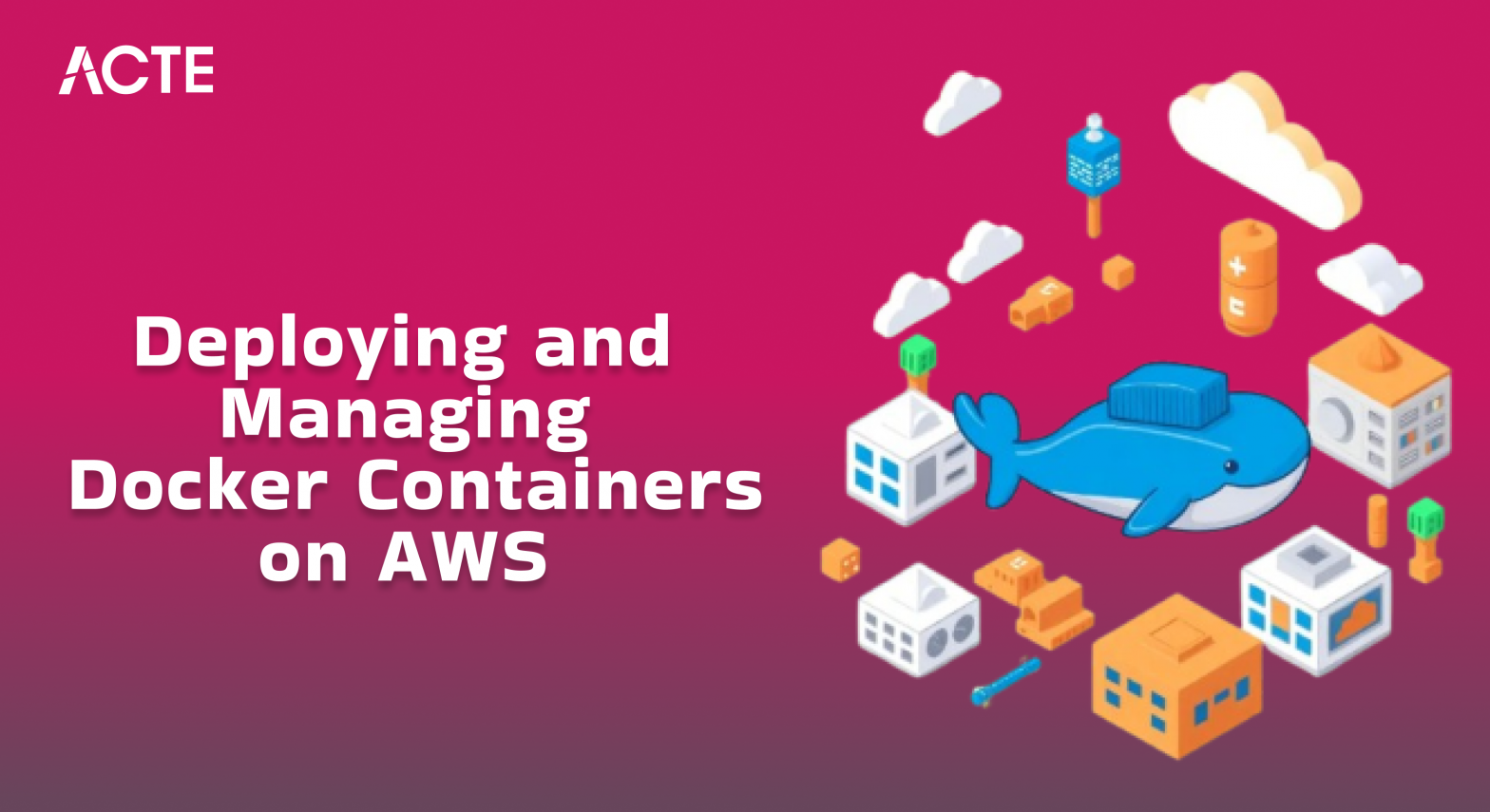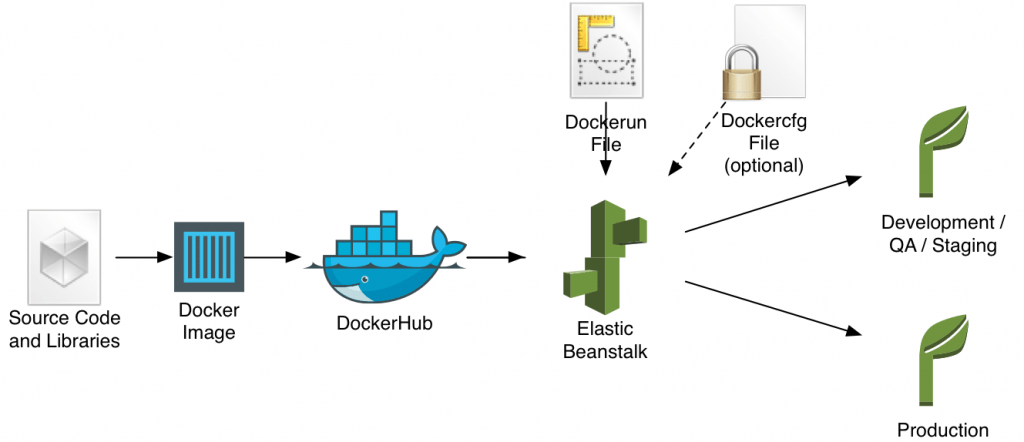
- Introduction to AWS and Docker
- Running Docker Containers on AWS
- AWS Services for Docker (ECS, EKS, Fargate)
- Deploying Docker Containers with AWS Elastic Beanstalk
- Security and Best Practices for Docker on AWS
- Monitoring and Scaling Docker Workloads on AWS
- Conclusion
Introduction to the Shared Responsibility Model
Amazon Web Services is a comprehensive cloud computing platform that offers a variety of services including computing power, storage and networking. Docker Training has become a leading choice for organizations looking to migrate to the cloud owing to vast array of tools that help manage infrastructure scale applications and ensure reliability Docker on the other hand is an open source platform that enables developers to automate the deployment of applications inside lightweight portable containers. These containers bundle an application with all its dependencies, making it easy to run anywhere, be it on local machines, private data centers, or the cloud. Docker containers offer consistency across multiple environments making them ideal for modern cloud-native applications. When Docker is used with AWS, it enables developers to run containerized applications with scalability, flexibility, and efficiency, taking full advantage of AWS vast infrastructure and services. By integrating Docker with AWS you can create highly scalable, fault-tolerant, and secure environments for your applications.
Running Docker Containers on AWS
Running Docker containers on AWS involves several steps, including choosing an appropriate service to orchestrate, deploy, and manage containers at scale. AWS provides multiple options for running Docker containers based on your needs:
- Amazon EC2: You can launch Docker containers on Amazon Elastic Compute Cloud (EC2) instances providing a high degree of control over the container environment. You have to manually configure EC2 instances, install Docker, and manage the scaling of containers.
- Amazon ECS (Elastic Container Service): ECS is a fully managed service that makes it easy to run and scale Docker containers on AWS. It removes the need to manage the underlying infrastructure, as AWS handles that for you. ECS is designed to integrate seamlessly with other AWS services and supports both EC2 and Fargate launch types for running containers.
- Amazon EKS (Elastic Kubernetes Service): EKS allows you to run Kubernetes clusters on AWS Database Migration Service DMS, managing and scaling Docker containers in a Kubernetes-based environment. Kubernetes is an open-source system for automating the deployment, scaling, and management of containerized applications.
- AWS Fargate: Fargate is a serverless compute engine that allows you to run containers without managing the underlying EC2 instances. With Fargate, you specify the resource requirements for your containers, and AWS automatically handles the provisioning and scaling of compute resources.
- AWS Lambda (for Serverless Containers): AWS Lambda now supports container images, allowing developers to package and deploy their applications as Docker containers to be executed serverlessly. This is ideal for microservices and event-driven architectures.
- ECS simplifies container orchestration and management on AWS.
- ECS allows you to run Docker containers in a fully managed cluster of EC2 instances, using services such as Amazon EC2 Container Instances or AWS Fargate.
- ECS integrates with AWS Identity and Access Management (IAM) for fine-grained access control and Amazon CloudWatch for monitoring.
- It supports both EC2 and Fargate launch types, providing flexibility in container deployment. Key Features:
- Highly scalable container orchestration service.
- Integration with other AWS Codedeploy Automate App Deployments like CloudWatch, IAM, and ALB (Application Load Balancer).
- Support for both EC2 and serverless compute with Fargate.
- EKS is a managed Kubernetes service that allows you to run containerized applications on Kubernetes clusters managed by AWS.
- Kubernetes automates the deployment, scaling, and management of containerized applications, making it ideal for large, complex systems.
- With EKS, you can integrate Docker containers into a Kubernetes cluster, enabling greater flexibility, scalability, and control. Key Features:
- Fully managed Kubernetes clusters.
- Supports both self-managed and AWS-managed node groups.
- Integration with IAM for security, and CloudWatch for logging and monitoring.
- Fargate is a serverless compute engine for running containers.
- It eliminates the need to provision or manage servers, enabling you to focus solely on your containerized applications.
- You specify the resource requirements (CPU and memory) and AWS automatically provisions the necessary infrastructure. Key Features:
- Serverless container deployment.
- Pay only for the resources your container consumes.
- Simplifies scaling and management by removing the need for EC2 instances.
- Simplified deployment process for Docker containers elastic Beanstalk provides a user friendly and seamless platform for deploying Docker containers with minimal configuration enabling you to focus more on application development instead of dealing with complex infrastructure management tasks. .
- Automatic scaling, load balancing, and management of EC2 instances elastic beanstalk automatically adjusts the number of EC2 instances based on traffic demands, distributing workloads efficiently across instances AWS Network Load Balancer ensures optimal performance while reducing manual intervention for scaling and load balancing needs.
- Integrated monitoring with CloudWatch elastic beanstalk offers built in integration with Amazon CloudWatch, allowing you to easily monitor your application’s health, performance metrics and resource utilization This makes it easier to identify and resolve issues before they impact your application availability.
- Automatic patching and updates for underlying infrastructure elastic beanstalk handles the routine maintenance tasks, including security patching and updates, for the underlying infrastructure This reduces the administrative overhead ensuring that your application runs on secure and up-to-date resources without requiring constant manual intervention.
- Use IAM Roles for Security: Assign the least privilege IAM roles to your Docker containers to minimize the risk of unauthorized access to AWS resources. This applies to ECS, EKS, and Fargate as well.
- Secure Docker Images: Ensure that Understanding Docker images you use are up-to-date and come from trusted sources. Regularly scan images for vulnerabilities using tools like Amazon ECR (Elastic Container Registry) image scanning. Avoid running containers as root; instead, create a non-privileged user for the application within the container.
- Network Security: Use AWS VPC (Virtual Private Cloud) to isolate your Docker containers and restrict access to them using security groups and network ACLs. Leverage AWS Security Groups to control inbound and outbound traffic to and from containers.
- Container Secrets Management: Avoid hardcoding sensitive information in your Docker images or configuration files. Instead use AWS Secrets Manager or Amazon SSM Parameter Store to securely store and manage secrets.
- Use Multi-AZ Deployments: Use Docker containers in various AWS availability zones to achieve high availability This guarantees that your application will continue to function even in the event that one AZ goes down.
- Monitor Container Logs: To keep an eye on container logs and set up alert for problems like excessive CPU or memory usage use AWS CloudWatch. This enables you to take preventative measures to keep your containers healthy.
- Container Security Best Practices: Keep your Docker engine up-to-date to avoid security vulnerabilities. Use Docker’s built-in security features, such as user namespaces, to isolate containers from each other.
Master Docker skills by enrolling in this Docker Training Course today.
Deploying Docker Containers with AWS Elastic Beanstalk
AWS Elastic Beanstalk is a platform-as-a-service (PaaS) offering from AWS that simplifies the deployment and management of applications in the cloud. It streamlines the process of deploying Docker containers by automatically handling the underlying infrastructure, including EC2 instances, load balancing and auto scaling. Instead of manually configuring and managing servers developers can focus on writing code while Elastic Beanstalk takes care of the deployment. To deploy a Docker container with AWS Elastic Beanstalk, you first need to create a Docker Compose for Multi Container Apps, which defines the necessary environment, dependencies, and configurations required for running the application inside the container. Next, you must create an Elastic Beanstalk application, which can be done using the AWS Management Console, CLI, or Elastic Beanstalk CLI. Once the application is created, you can configure the Docker deployment, including support for multi-container applications, allowing multiple containers to run as part of the same application. After setting up the configuration, you can deploy the application, and AWS Elastic Beanstalk will automatically manage tasks such as provisioning EC2 instances, scaling based on demand, and load balancing. This automated approach ensures a scalable, efficient, and hassle-free deployment process for Docker-based applications.

AWS Services for Docker (ECS, EKS, Fargate)
AWS provides several powerful services to run, manage, and scale Docker containers, including:
Amazon ECS (Elastic Container Service):Enhance your knowledge in Docker. Join this Docker Training Course now.
Amazon EKS (Elastic Kubernetes Service):
Want to lead in Cloud Computing? Enroll in ACTE’s Cloud Computing Master Program Training Course and start your journey today!
Benefits of Using Elastic Beanstalk for Docker:
Monitoring and Scaling Docker Workloads on AWS
AWS provides a comprehensive suite of tools to monitor and scale Docker workloads ensuring that applications can efficiently handle fluctuating demand while maintaining high performance. Amazon CloudWatch plays a crucial role in monitoring Docker containers. With CloudWatch Logs developers can track logs generated by containers aiding in debugging and identifying performance bottlenecks. CloudWatch Metrics provides valuable insights into CPU utilization, memory usage and disk I/O, helping users optimize their container performance. Additionally CloudWatch Alarms can trigger automated actions based on pre defined thresholds, such as high CPU consumption, ensuring proactive issue resolution. For auto-scaling, AWS offers ECS Auto Scaling, which dynamically adjusts container resources based on CPU and memory utilization. Similarly, EKS Auto Scaling leverages the Horizontal Pod Autoscaler to scale Kubernetes pods efficiently. To balance traffic, AWS integrates Application Load Balancer with ECS and EKS distributing requests across multiple containers or pods to ensure high availability and fault tolerance. Elastic Load Balancing further enhances scalability by adjusting traffic distribution based on container health preventing downtime during high traffic spikes. AWS Fargate simplifies scaling by abstracting infrastructure management. It automatically provisions and scales container resources based on specified CPU and memory requirements eliminating the need to manage underlying EC2 instances. Docker Training seamless scaling approach allows developers to focus on managing their containerized applications while AWS handles resource allocation, performance optimization and scalability.
Ready to excel in Cloud Computing? Enroll in ACTE’s Docker Interview Questions and Answers and begin your journey today!
Security and Best Practices for Docker on AWS
Security is a critical consideration when running Docker containers on AWS. The following best practices should be followed to ensure the security of your Docker workloads on AWS:
Conclusion
AWS provides a powerful and flexible environment for deploying and managing Docker containers. With services like ECS, EKS, Fargate and Elastic Beanstalk, Docker containers can be easily orchestrated and scaled across a variety of AWS services. By integrating Docker with AWS, organizations can take advantage of cloud-native benefits like scalability, cost efficiency, and high availability while maintaining full control over containerized workloads. Docker Training Course provides advanced networking, logging, and monitoring solutions such as CloudWatch, CloudTrail and IAM to enhance security and operational efficiency. Adhering to security best practices, monitoring tools and auto-scaling capabilities ensures that your containerized applications on AWS run smoothly and securely. Additionally, AWS Load Balancers, IAM roles and encryption methods help enhance data security, prevent unauthorized access and optimize application performance. By leveraging AWS extensive infrastructure, businesses can deploy high-performance, fault-tolerant and resilient containerized applications that adapt to changing workloads with minimal operational overhead.





